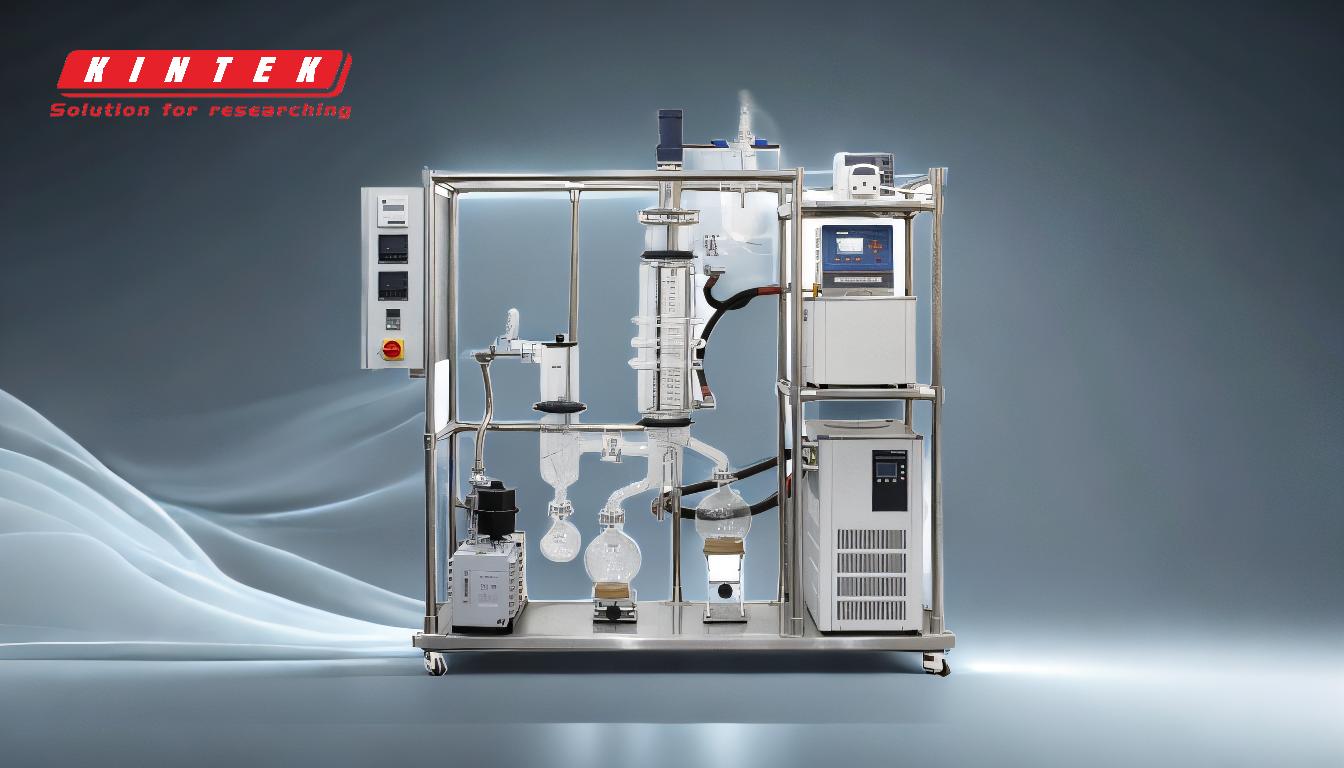Vacuum distillation is a specialized separation technique used to purify or separate liquids with high boiling points or those that decompose at high temperatures. By reducing the pressure inside the distillation apparatus, the boiling points of these liquids are lowered, allowing them to evaporate at much lower temperatures. This prevents thermal degradation and ensures the preservation of the compounds' quality. The process involves boiling the liquid mixture, condensing the vapor, and collecting the purified distillate. It is widely used in industries such as petrochemicals, essential oil extraction, and laboratory research to obtain high-purity compounds.
Key Points Explained:

-
Definition and Purpose of Vacuum Distillation:
- Vacuum distillation is a method used to separate or purify liquids that have high boiling points or are sensitive to heat.
- It is particularly useful for compounds that decompose at their normal boiling temperatures, as it allows them to be distilled at lower temperatures.
-
How It Works:
- The process involves reducing the pressure inside the distillation apparatus to below atmospheric pressure.
- Lowering the pressure reduces the boiling point of the liquid, enabling it to evaporate at a much lower temperature.
- Once the vapor pressure of the liquid matches the reduced surrounding pressure, it vaporizes.
- The vapor is then condensed back into a liquid and collected as the distillate.
-
Key Principles:
- Lower Boiling Points Under Reduced Pressure: The boiling point of a liquid decreases as the pressure decreases. For example, water boils at 100°C at sea level (1000 mbar), but at 45 mbar, it boils at a much lower temperature.
- Preservation of Sensitive Compounds: By avoiding high temperatures, vacuum distillation prevents thermal degradation, preserving the quality, taste, and chemical integrity of the compounds.
-
Applications:
- Petrochemical Industry: Used to separate heavy crude oil components that would otherwise decompose at high temperatures.
- Essential Oil Extraction: Ensures the delicate aromatic compounds in essential oils are not damaged during distillation.
- Laboratory Research: Provides high-purity samples of heat-sensitive compounds for analysis or further experimentation.
-
Advantages:
- Gentle Separation: Reduces the risk of thermal degradation, making it ideal for heat-sensitive materials.
- Energy Efficiency: Lower operating temperatures can lead to energy savings compared to traditional distillation methods.
- High Purity: Produces high-purity distillates by avoiding contamination from decomposition products.
-
Comparison with Atmospheric Distillation:
- Atmospheric distillation operates at standard atmospheric pressure, requiring higher temperatures to boil liquids.
- Vacuum distillation, on the other hand, operates at reduced pressure, enabling the distillation of high-boiling-point compounds without excessive heat.
-
Equipment and Process Design:
- Vacuum Pump: Creates and maintains the reduced pressure environment.
- Distillation Flask: Holds the liquid mixture to be distilled.
- Condenser: Cools the vapor back into a liquid.
- Collection Flask: Stores the purified distillate.
- The process can be combined with steam or fractional distillation for more efficient separation of complex mixtures.
-
Example of Practical Use:
- In the food and beverage industry, vacuum distillation is used to extract flavors and fragrances without altering their natural characteristics.
- In the pharmaceutical industry, it is employed to purify heat-sensitive active pharmaceutical ingredients (APIs).
By understanding these key points, a purchaser of equipment or consumables can make informed decisions about whether vacuum distillation is the right method for their specific needs, ensuring the quality and efficiency of their processes.
Summary Table:
| Aspect | Details |
|---|---|
| Definition | A method to separate or purify liquids with high boiling points or heat sensitivity. |
| How It Works | Reduces pressure to lower boiling points, preventing thermal degradation. |
| Key Principles | Lower boiling points under reduced pressure; preserves sensitive compounds. |
| Applications | Petrochemicals, essential oil extraction, laboratory research. |
| Advantages | Gentle separation, energy efficiency, high-purity distillates. |
| Comparison | Operates at reduced pressure vs. atmospheric distillation at higher temps. |
| Equipment | Vacuum pump, distillation flask, condenser, collection flask. |
| Practical Uses | Food & beverage flavors, pharmaceutical APIs. |
Discover how vacuum distillation can optimize your processes—contact us today for expert advice!











